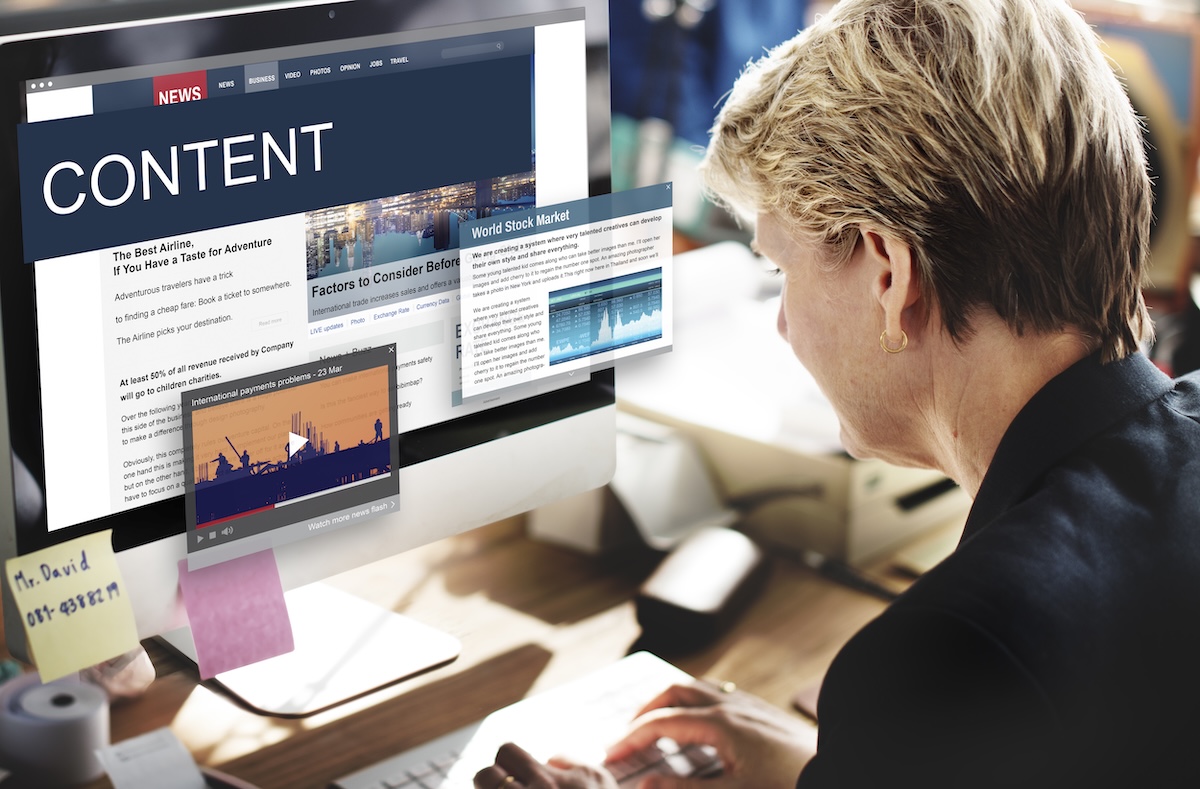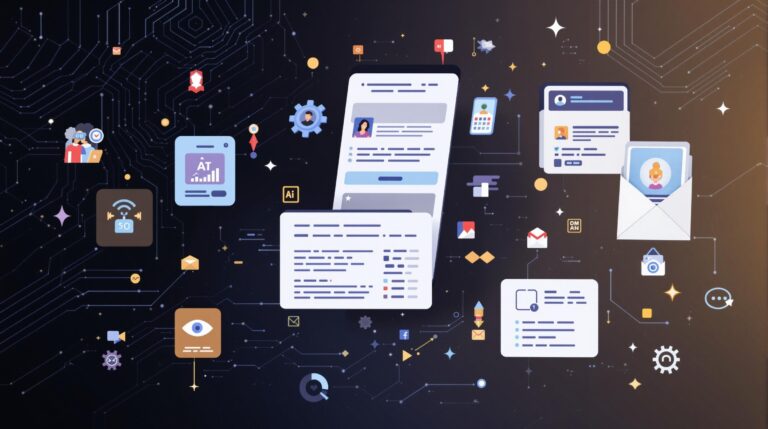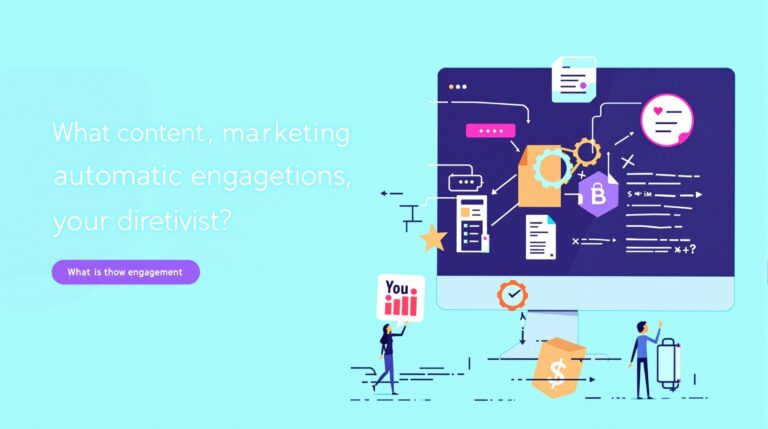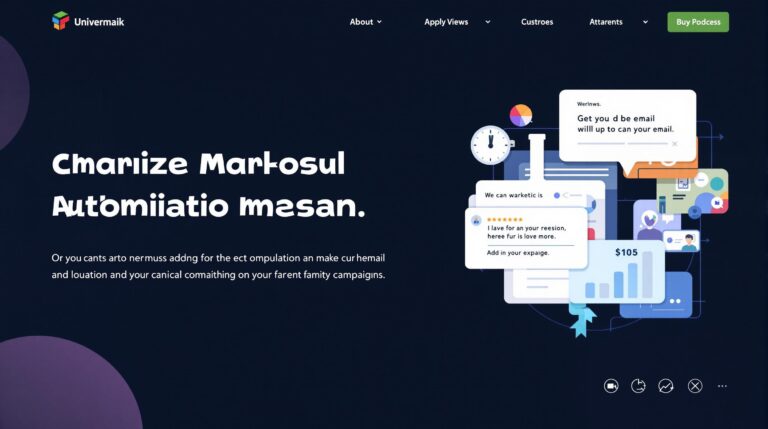The Full Funnel Approach: Integrating Content Automation at Every Stage of the Buyer’s Journey
The modern marketing landscape requires a holistic strategy that addresses prospects at every phase of their purchasing decision, from initial awareness to final conversion. Implementing content funnel automation throughout these stages creates a cohesive experience that guides potential customers naturally through their buying journey while delivering increasingly targeted and relevant information exactly when they need it.
Key Takeaways
- Companies using full-funnel automation see up to 396% organic traffic growth and significantly higher conversion rates
- Automated content should be strategically mapped to align with specific stages of the buyer journey
- Personalization through buyer journey AI dramatically increases engagement and conversion metrics
- Middle-funnel automation generates over 8x more revenue per recipient compared to non-automated campaigns
- Measuring both stage-specific and holistic metrics is essential for marketing funnel optimization
The Power of Full-Funnel Content Automation
Marketing has fundamentally changed in recent years. Rather than focusing on isolated campaigns, forward-thinking companies now embrace comprehensive funnel strategies that leverage automation to deliver the right content at the right time. The data supporting this approach is compelling – organizations implementing full-funnel automation experience up to 396% organic traffic growth, 44% lift in conversion rates, and 30x higher revenue per email recipient.
This dramatic performance boost occurs because automated lead nurturing addresses a fundamental customer desire: personalization. Research shows 75% of consumers prefer brands that tailor content based on their purchase history and behaviors. By automating this personalization across all stages, companies can deliver consistently relevant experiences without exponentially increasing marketing workloads.
Full-funnel strategies that combine brand-building with performance marketing generate 12.8% annual growth in automation adoption. This indicates the market is rapidly recognizing the value of comprehensive approaches over siloed tactics focused on single funnel stages.
Understanding the Modern Buyer’s Journey
Before implementing automation, it’s crucial to understand the three main stages that comprise the modern buying journey:
- Top of funnel (Awareness): Prospects recognize a problem or opportunity but don’t yet know about potential solutions
- Middle of funnel (Consideration): Prospects evaluate different solutions to their identified problem
- Bottom of funnel (Decision): Prospects select a specific solution and prepare to purchase
AI-powered platforms like PathFactory have revolutionized this process by analyzing visitor behavior to automatically recommend appropriate content for each stage. This ensures prospects receive information relevant to their current decision phase rather than generic messaging.
Interestingly, 54.2% of e-commerce automation today focuses on cart abandonment – addressing the critical transition between middle and bottom funnel stages. This concentrated focus reflects how businesses are targeting high-impact points where automation can most directly influence revenue.
Top-Funnel Automation: Creating Awareness at Scale
At the awareness stage, content automation focuses on educational materials that help prospects identify their challenges and introduce potential solutions. Effective top-funnel content includes blog posts, social media videos, podcasts, and interactive infographics.
Top-of-funnel automation delivers impressive results. Automated educational email sequences achieve 73% open rates, significantly outperforming industry averages. Real-world success stories like Happy Ears Hearing Center demonstrate the power of this approach – they achieved a 396% increase in organic traffic by implementing SEO-optimized top-funnel content.
Best practices for top-funnel automation include:
- Setting up trigger-based email nurtures when users download resources
- Using AI tools to identify trending topics your audience cares about
- Automating content distribution across multiple channels simultaneously
- Implementing progressive profiling to gradually collect lead information
Middle-Funnel Automation: Building Trust Through Personalization
The consideration stage requires content that builds credibility and helps prospects evaluate options. Case studies, product comparisons, and webinars with automated follow-up sequences excel here.
Middle-funnel automated workflows generate remarkably higher returns than manual approaches – $16.96 per recipient for top performers versus just $1.94 for average campaigns. Companies like Birdies have leveraged automated drip campaigns with AI-generated insights to achieve a 16% conversion lift during the consideration stage.
Effective middle-funnel automation tactics include:
- Deploying automated price-drop alerts (Premier achieved 12% click rates)
- Integrating CRM data for personalized webinar follow-ups
- Using behavioral triggers to serve comparative content
- Implementing lead scoring to prioritize sales outreach
Bottom-Funnel Automation: Converting Prospects to Customers
Decision-stage automation focuses on removing purchase barriers and creating urgency. Effective bottom-funnel automation includes free trial offers with countdown timers, automated demo scheduling, and customer testimonials in retargeting campaigns.
The statistics at this stage are particularly impressive – automated cart recovery emails achieve 60% conversion rates, while personalized post-purchase sequences generate $5.14 per recipient. By implementing marketing funnel optimization at this critical stage, companies can dramatically increase their conversion rates.
Bottom-funnel automation best practices include:
- A/B testing different urgency triggers (limited time offers, low stock alerts)
- Synchronizing loyalty program offers with purchase history
- Automating sales team follow-ups based on high-intent behaviors
- Personalizing checkout experiences based on browsing history
Post-Purchase Automation: Driving Retention and Advocacy
While often overlooked, post-purchase automation plays a critical role in maximizing customer lifetime value. Automated onboarding sequences, personalized usage tips, and loyalty rewards systems help turn one-time buyers into repeat customers and active advocates.
Organizations using full-funnel automation that extends through the post-purchase phase see 42% lower unsubscribe rates, indicating higher customer satisfaction. The most effective post-purchase automation sequences deliver astonishing ROI – the top 10% of these workflows achieve 531x return on investment for campaigns costing just $220 to implement.
Successful post-purchase automation strategies include:
- Triggering product education based on first-time usage patterns
- Automating referral requests after identifying positive interactions
- Implementing replenishment reminders based on typical usage timelines
- Creating personalized cross-sell recommendations using purchase history
Measuring Full-Funnel Automation Success
Effective measurement requires both stage-specific metrics and holistic performance indicators. For top-funnel automation, focus on organic traffic growth, social engagement, and time-on-page. Middle-funnel effectiveness shows in email click-through rates, webinar attendance, and lead qualification metrics. Bottom-funnel success appears in conversion rates, average order value, and customer lifetime value.
The right tools make measurement more accessible. Google Analytics provides attribution insights, PathFactory tracks content journey interactions, and Cognism offers specialized B2B buyer journey analytics for complex sales cycles.
By monitoring both granular and comprehensive metrics, marketers can identify specific automation sequences that drive disproportionate results and optimize lead generation processes accordingly.
Implementing Your Full-Funnel Automation Strategy
Creating an effective full-funnel automation strategy involves several key steps:
- Start with detailed audience segmentation and journey mapping
- Select automation tools that integrate across your existing marketing technology stack
- Prioritize high-impact automation opportunities (like cart abandonment, which sees 30x more revenue)
- Continuously test and refine automated sequences
Begin with manageable automation projects that show quick ROI, then expand your approach as you gather data and refine your strategies. Remember that effective automation isn’t about replacing human creativity but amplifying it – the most successful programs combine technological efficiency with authentic, valuable content.
By implementing buyer journey AI throughout your marketing funnel, you’ll create a more cohesive experience that guides prospects naturally from awareness to purchase while delivering increasingly targeted and relevant information at each stage. This comprehensive approach not only improves conversion rates but also enhances customer satisfaction and lifetime value.
Sources
HawkSEM Full Funnel Content Strategy
McKinsey Why Every Business Needs a Full-Funnel Marketing Strategy
Mayple Marketing Automation Case Studies
Influencer Marketing Hub Full-Funnel Marketing Strategy
PathFactory Web Tools
Upland Software Implementing Full-Funnel Content
Email Vendor Selection Marketing Automation Statistics
Cognism Ultimate Guide to the B2B Buyers Journey








